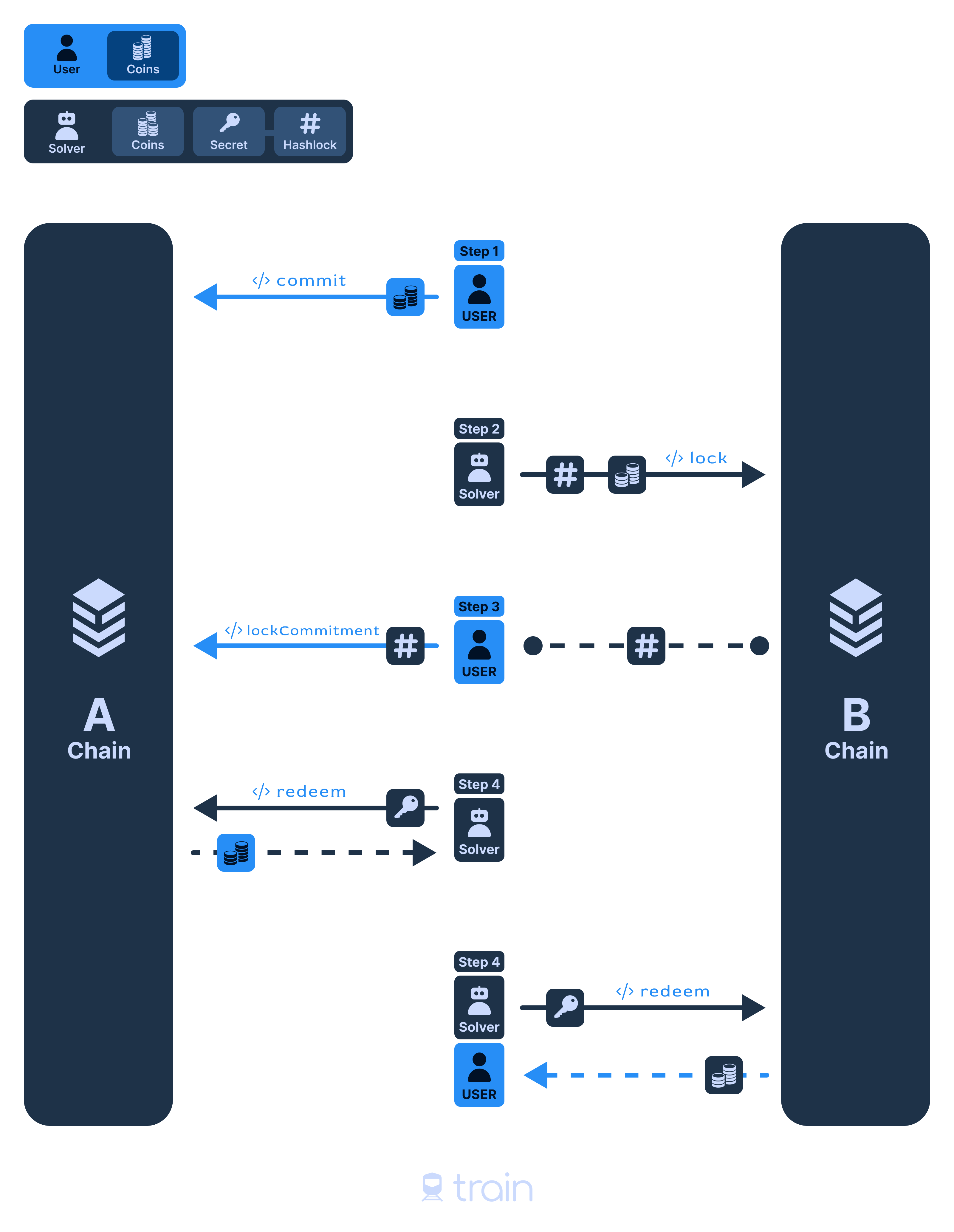- Secret Management Delegated: The Solver generates and manages the secret, relieving the User of this responsibility.
- Claim Transactions Simplified: The Solver executes the claim transaction on the destination Network, addressing the issue of Users lacking assets on a new Network.
TRAIN PreHTLC Flow

1
User Commit
The user creates a PreHTLC, committing funds for the selected Solver -
commit().2
Solver Lock
The Solver detects this transaction, generates a random Secret S, and creates an HTLC, locking funds (minus the Solver Fee) for the user in the destination chain -
lock().3
User AddLock
The user observes the transaction on the destination chain, retrieves the Hashlock, and converts their PreHTLC to an HTLC on the source chain. The PreHTLC can only be converted once with a single Hashlock; no other information can be altered -
addLock().4
Unlocks
Upon seeing this conversion, the Solver reveals the Secret S on the destination chain to release the user’s funds and then reveals the Secret S on the source chain to claim their funds -
redeem().